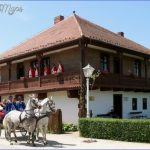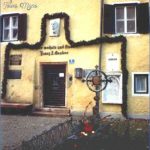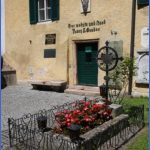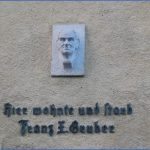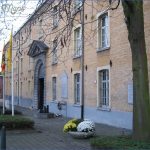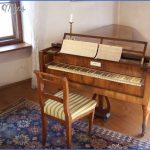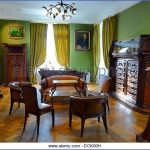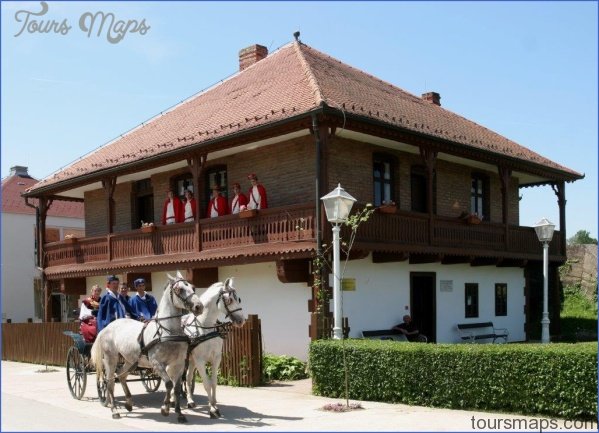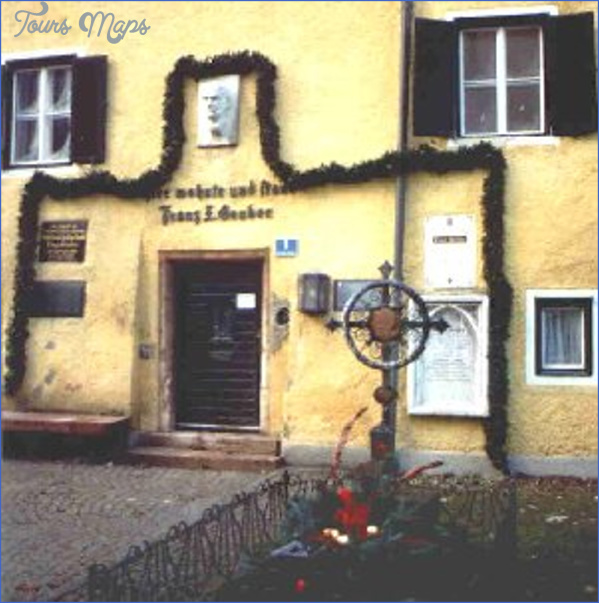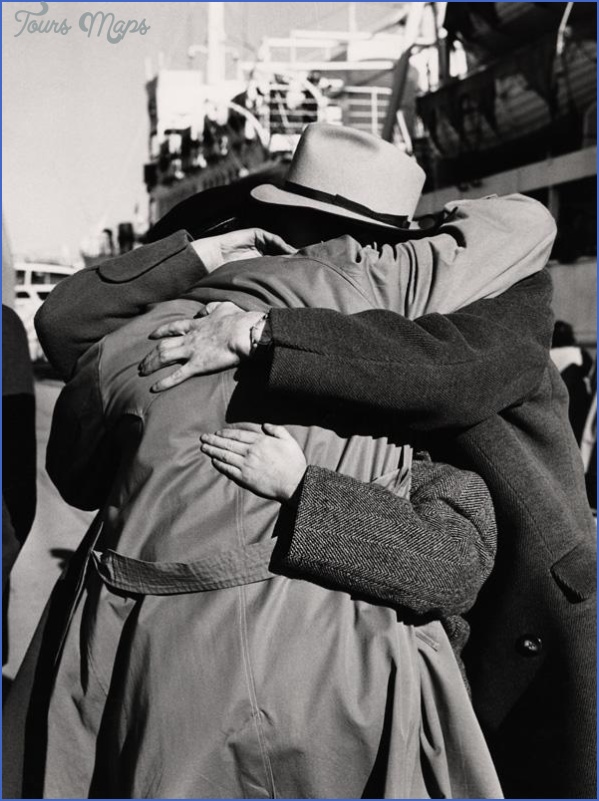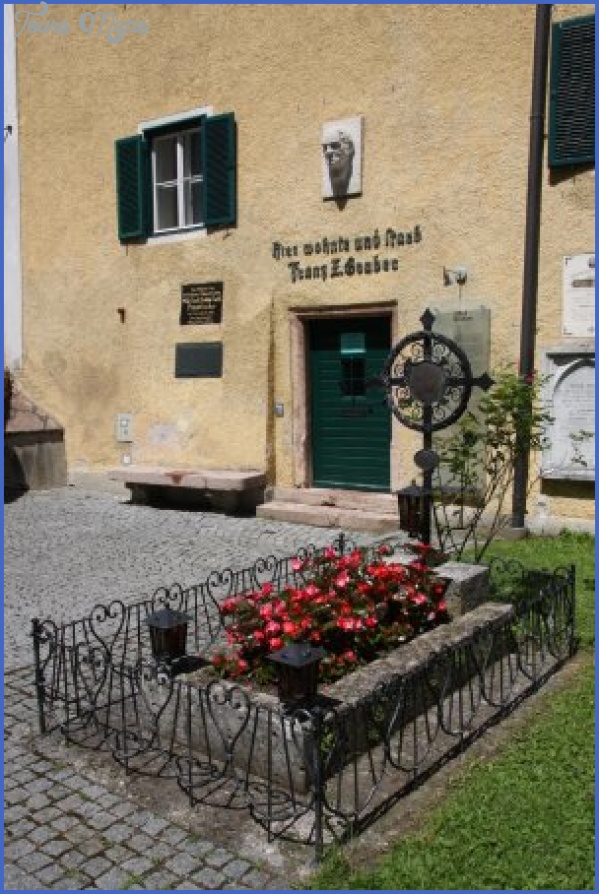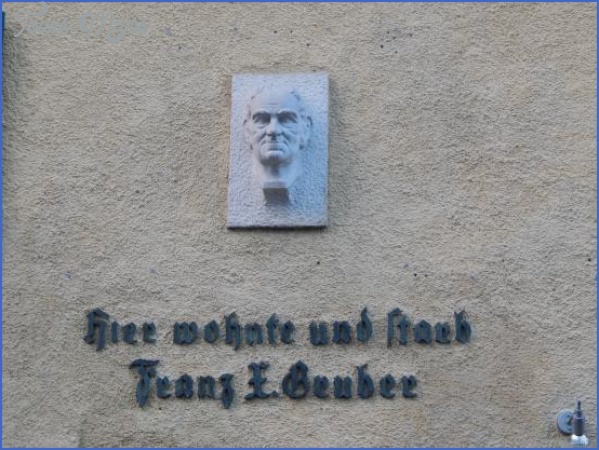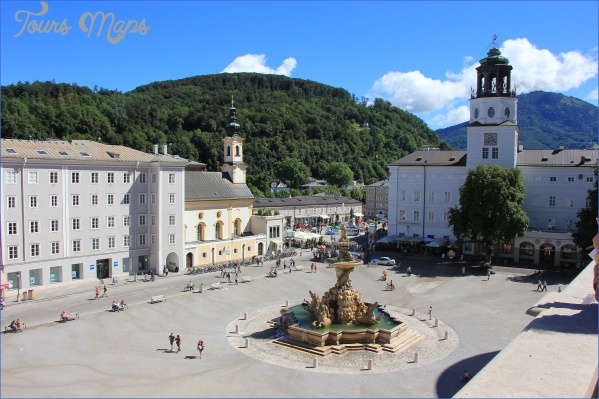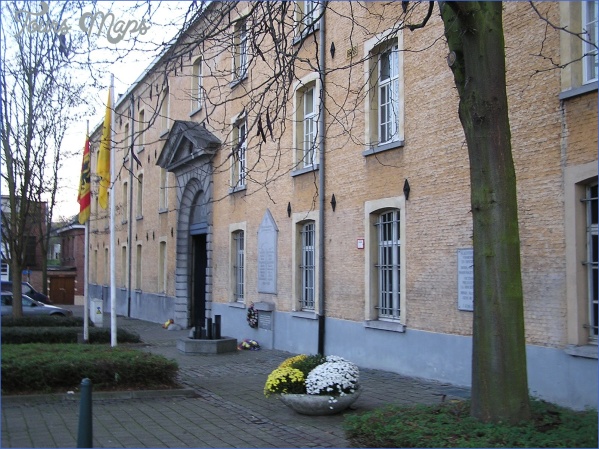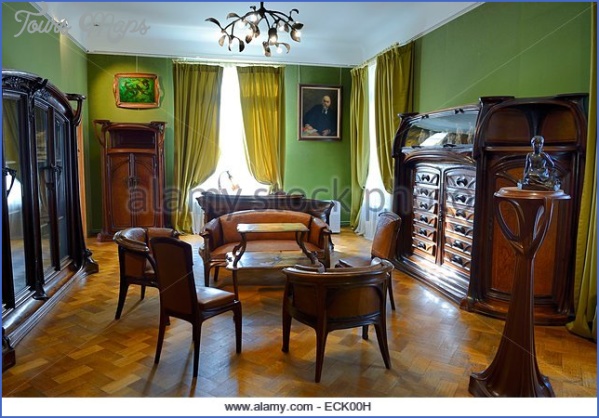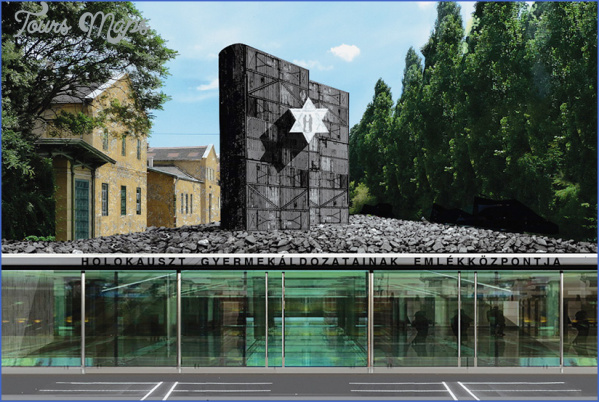GRUBER MUSEUM
The best-loved composer in the Salzburg region? To judge by the number of museums, there can be only one possible answer: Franz Xaver Gruber.
On Christmas Eve 1818, in a little Austrian village some 15 km north of Salzburg, Gruber composed a new carol for Midnight Mass. Born in 1787 and then 31, he was Kan tor and organist at St Nicholas, Oberndorf. The text of his ‘Stille Nacht’ (‘Silent Night’ in the English-speaking world) was by his friend Joseph Mohr, the priest at the church. ‘Stille Nacht’ was set for two solo voices and chorus; a guitar was used to accompany it because at the time the organ was out of commission and needed repairs. Every year, at the Christmas season, the sites associated with Gruber and ‘Silent Night’ are inundated with pilgrims.
The Gruber memorial house at Hochburg
Gruber was born at the nearby village of Hochburg. He was christened Conrad Xaver but apparently always called Franz. The house on the site of his birth, Unterweizburg 9 (the original house was demolished in 1927), is marked by a plaque, as too is the village school (now a music school, next to the church) that he attended. But there is in Hochburg a Gruber Memorial House, a replication of the original building (near the church in the upper part of the village), part of it serving too as the local Heimatmuseum -built, like the original, solely of wood, without nails, with weighty stones to hold the roof in place. Downstairs is an entrance hall, a living-room, furnished with pieces from the period, from local sources (rag rugs, a clock in working order, a wood stove), and a kitchen, with utensils, a stone sink and an open fire for cooking. Upstairs are the Gruber rooms. His father was a weaver, and he was apprenticed as one while at the same time learning the organ; what is thought to be the original family weaving loom used by Gruber himself is there, with samples of the rough flax and the tools used for making it. But there are also displays, including early photos of Hochburg, a model of the original house, a facsimile entry of his birth, a copy of a drawing of the church believed to be Gruber’s work and a collection of Gruber stamps. In the family bedroom are a wood bed and a cradle, religious statuettes and pictures and a bedside shrine. It adds up to a sharp portrayal of the harsh rural life to which he was brought up.
GRUBER MUSEUM Photo Gallery
The church of St Nicholas at
Oberndorf was demolished in 1910, but where it stood a picturesque little octagonal chapel has been constructed as a shrine. Inside are a few pews, an altar and portraits of Mohr and Gruber as well as stained-glass windows commemorating Oberndorf and the nearby village of Arnsdorf, where Gruber had taught at the village school since 1807. Below the shrine, across the street, in Stille-Nacht-Platz, is the Heimatmuseum, the local history museum. Founded in 1928, it incorporates a ‘Stille Nacht’ Room, recounting the composition of the beloved piece and the history of the church. There are recordings – you can listen to a tape of various versions of the carol – as well as postage stamps and postmarks to inspect; there is a harmonium on display, but it postdates the carol by two years so holds no particular significance.
Arnsdorf is walking distance, about four kilometres, from Oberndorf (or at least it was so considered in Gruber’s day). The schoolhouse where Gruber taught nestles against the local church, Maria am Mosl (also known as the Pilgrimage Church), which dates from the 17th century; there Gruber married the first of his three wives. The ground floor of the schoolhouse still serves the children of the community; upstairs is the local history museum. In the room where Gruber is thought to have composed, a watercolour portrait of him is on display. The black furniture inlaid with mother-of-pearl in the second room comes from his final home in Hallein; strangely, there are portraits of only his second and third wives (given to Arnsdorf in 1948 by his grandson Felix). Christmas story effigies are displayed in the cupboards.
At Hallein, in the building where he lived for most of his life, now 1 Franz-Xaver-Gruber-Platz, there is a dedicated Gruber museum in the old town on the hill, next to the parish church where he directed the choir for almost 30 years until his death in 1863. It opened in 1992. Before entering, callers will want to pause to pay their respects to Gruber himself,
The Gruber museum, Hallein for he is buried immediately to the right of the door. Six tablets of different origins affixed to the house commemorate the composer. The museum, on the second floor, features a small room, furnished in period style, with a piano and the ubiquitous harmonium, in addition to a larger room of tasteful modern displays. Among the most important items in the collection are seven autograph manuscripts, five of Gruber’s own watercolour landscapes and Mohr’s historic guitar. Then, too, there is the document Gruber was obliged to draw up in 1854 to establish his claim to the authorship of ‘Stille Nacht’. Without thought of the possible consequences, he had given a copy of the carol in 1825 to a visiting Tyrolean organ builder; when it was performed at a trade fair in Leipzig in 1831 and later published in altered form as a Tyrolean folksong, it became instantly popular. Although Gruber sought to reinstate his original version of the melody, the corrupted (or perhaps corrected) text has prevailed. At least he succeeded in having his name forever associated with ‘Stille Nacht’. He did compose and publish other sacred music in the course of his duties in Hallein, which can be acquired at the museum in carefully prepared modern editions – although perusal of them suggests that the inspiration of ‘Stille Nacht’ struck but once. In view of the strong feelings that the origins of this best-loved carol evoke among Austrians, it will come as no surprise to learn that there is an alternative ‘Stille Nacht’ museum. This is at the humble birthplace of Joseph Mohr in Salzburg, at Steingasse 9, opened as recently as 1996. The founder and curator, Hanno Schilf, is convinced that it was actually Mohr who composed the carol and Gruber merely arranged it. The first-floor museum, or memorial place, occupies two small rooms, vividly recreating the poverty into which Mohr was born in 1792.
Maybe You Like Them Too
- Top 10 Islands You Can Buy
- Top 10 Underrated Asian Cities 2023
- Top 10 Reasons Upsizing Will Be a Huge Travel Trend
- Top 10 Scuba Diving Destinations
- World’s 10 Best Places To Visit

